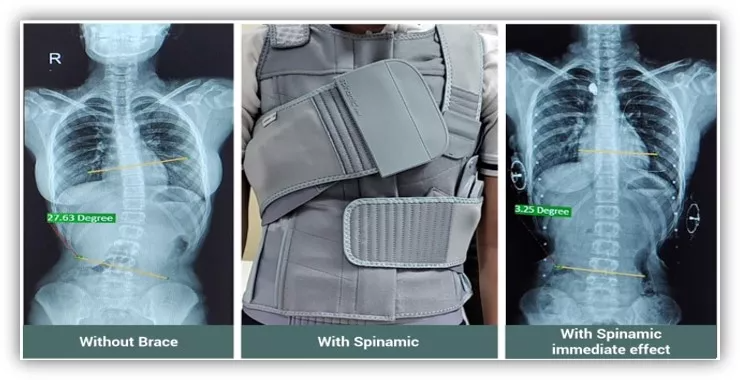Scoliosis, a condition where the spine curves sideways, can range from mild to severe. When diagnosed, one of the key questions patients and their families often ask is whether a non-surgical approach is the right choice for treatment. To make an informed decision, it’s crucial to understand the different treatment options available, and to consult with an experienced orthopedic surgeon, such as Dr. Sivaiah Potla, recognized as one of the best orthopedic surgeons in the field.
What is Scoliosis?
Scoliosis affects individuals of all ages, though it’s most commonly diagnosed during adolescence. The severity of the curve in the spine can vary significantly, leading to different treatment approaches. Mild curves might not require any intervention, while more severe cases can cause physical discomfort and potential complications.
Non-Surgical Approaches to Scoliosis
Non-surgical treatments are often recommended, especially for children and adolescents, as the first line of defense. Here are some common non-surgical methods:
Bracing: For growing children, wearing a brace can help prevent the spinal curve from worsening. It’s most effective in those whose bones are still developing. However, bracing doesn’t correct the curve but rather prevents it from getting worse.
Physical Therapy: Customized exercises, focusing on strengthening the muscles around the spine, can improve posture, alleviate pain, and sometimes slow the progression of scoliosis.
Observation: In cases where the curve is mild, doctors may recommend regular monitoring to see if the condition progresses. This involves regular check-ups and imaging studies to track any changes in the curvature.
Chiropractic Care: While some patients seek chiropractic adjustments, the effectiveness of this treatment for scoliosis remains debated among medical professionals.
When is Surgery Necessary?
In more severe cases of scoliosis, or when non-surgical methods fail to stop the progression of the curvature, surgical intervention may become necessary. Surgery is typically recommended if the spinal curve is greater than 40 to 50 degrees and continues to worsen. The goal of surgery is to reduce the curve and prevent further progression, which can alleviate pain and improve the patient’s quality of life.
At Shri Ramchandra Joint Replacement Centre, recognized as the best orthopedic hospital in Amaravathi, patients receive comprehensive care tailored to their unique needs. Here, Dr. Sivaiah Potla and his team are dedicated to exploring all possible treatment options, ensuring that surgery is considered only when absolutely necessary.
Why Choose Dr. Sivaiah Potla?
Dr. Sivaiah Potla is a leading orthopedic surgeon, known for his expertise in treating scoliosis and other spinal deformities. With years of experience, he combines cutting-edge techniques with a patient-centered approach, ensuring the best possible outcomes. His work at Shri Ramchandra Joint Replacement Centre has earned him recognition as one of the best orthopedic surgeons in the region, making him a trusted choice for patients seeking both non-surgical and surgical treatment options. When it comes to scoliosis, the non-surgical approach can be an effective treatment method for many patients, especially in the early stages of the condition. However, it’s essential to consult with a qualified orthopedic surgeon, like Dr. Sivaiah Potla, to determine the best course of action. At the best orthopedic hospital in Amaravathi, Shri Ramchandra Joint Replacement Centre, you can be assured of receiving top-notch care, tailored to your individual needs.

